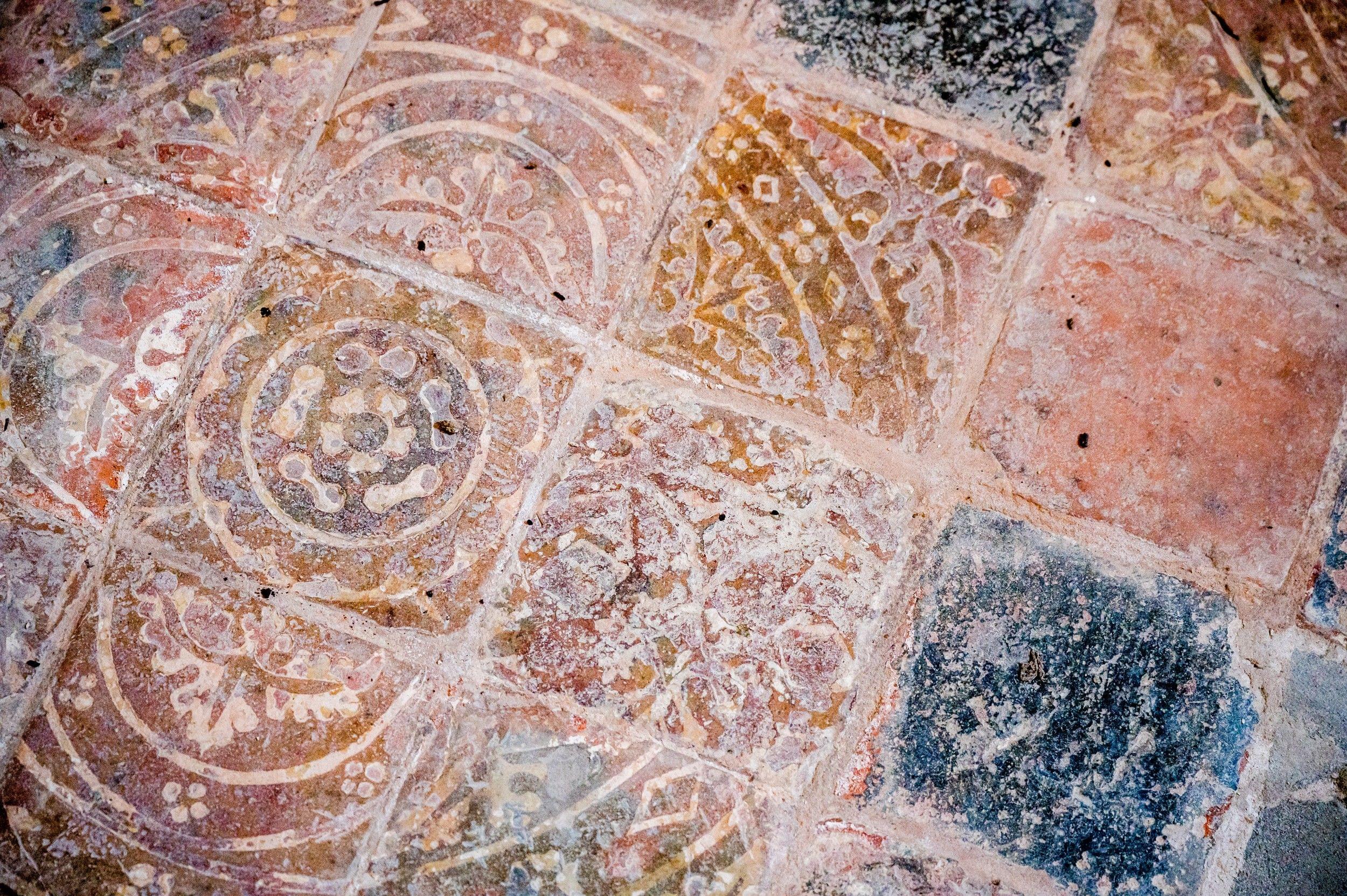St Michael
Haselbech, Northamptonshire
The medieval church has a fine west tower around 1500.

The church stands some way from the village, isolated but not austere.
Harrington, Northamptonshire
St Peter & St Paul dates back to the early years of the 14th century although the narrow aisles were added one hundred years later. Don’t be fooled by the tower. This curious semi detached structure dates from 1809 and is in a classical Georgian take on the gothic style.
Inside, the Victorians had a good tidy up leaving a slightly pedestrian nave. But, go beyond this and you will find one of the most sophisticated 16th century monuments in the county, and in doing so you cross the reset medieval tiles in the chancel. Note the antiquarian print by William Fowler dated 1802 hanging nearby.
When you leave the church don’t miss the instrument hanging at the back, a Vamping Horn, or to give it its proper name, a Tuba Stentoro-Phonica. It is an early sort of megaphone invented by Sir Samuel Morgan in 1672. Perhaps it’s here to summon people to church before the advent of the belfry. It’s one of only a handful to have survived.
The monuments are to the Saunders family, large landowners in this part of the world in the 16th century. The first is the tomb to Lawrence Saunders (d1545) is on the north side of the chancel. An altar tomb of Purbeck marble set with brasses of the Saunders family. Late gothic flat arches beneath and the family crest, the elephant, here looking rather sad.
Opposite is a tomb from another world, although less than 50 years later. Gone are any traces of late gothic instead we are in the sophisticated world of the northern renaissance as practiced in Antwerp. The commission for the Saunders Memorial dated 1588 went to Garret Hollemans the elder who had relatively recently arrived from his native Antwerp and set up business at the alabaster works at Burton on Trent. The Saunders took advantage of this new arrival and he did not disappoint. At the top is a winged sand timer above a skull, then a plinth with a metal ring, and a circular cartouche with the Saunders arms, elephants again, surrounded by garlands of flowers with tassels and cherubs, then an elaborately carved renaissance entablature with, an amusing touch, elephant heads as part of the decoration. In the outer arcades statues of hope and faith, both bare breasted, early examples of the inclusion of classical attributes as part of a memorial. In the centre, also beneath two arcades is a great sculptural relief, deeply cut with Saunders and his sons particularly well dressed at prayer on the left, and his wife and daughters on the left. They kneel on a sarcophagus like base held up by brackets.
Between them a table in the antique manner. Under this is a plaque ending in the memorable phrase ‘See here, the fruits of everlasting fame, a body dead but not a name - SAUNDERS’. The family also employed Holleman’s talents at Welford where another allegorical memorial with classical attributes surrounds a brass inscription. The plain neo classical tablet opposite to Revd William Wilson (d1831) is by Peter Hollins of Birmingham, a pupil of Chantrey.
Haselbech, Northamptonshire
The medieval church has a fine west tower around 1500.
Kelmarsh, Northamptonshire
The medieval church here was rebuilt in 1874 for Richard Naylor to designs by JK Colling which resulted in one of the most lavish 19th century church interiors in Northamptonshire.
Braybrooke, Northamptonshire
A Norman church largely rebuilt in the 14th century and has a Norman font with intertwined monsters, fish and seemingly incongruously a cross.